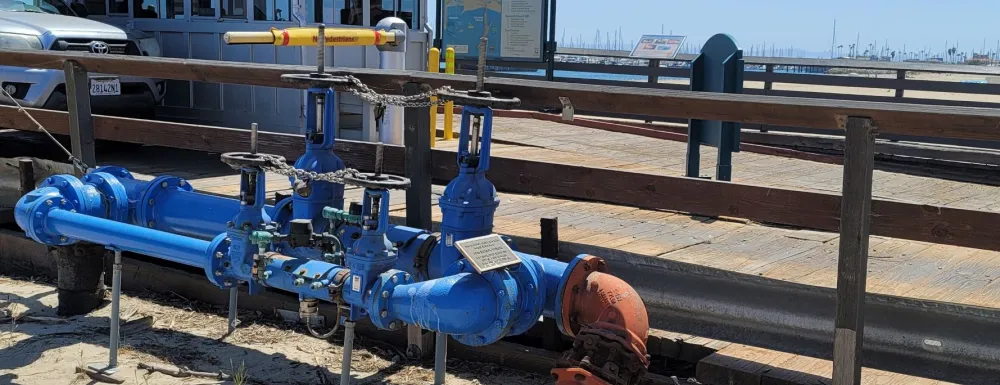16114
Image

Title
Cross-Connection Control Program
Body
Sections

For questions regarding assembly requirements and approvals for meter protection, fire protection, or more information about this program please call (805) 564-5413 or email Backflow@SantaBarbaraCA.gov.
Disclaimer: This video is a third-party production and is not affiliated with, endorsed by, or produced by the City
The City of Santa Barbara’s Water Resources Division invests millions of dollars each year to ensure the safety of our drinking water. A vital link in this effort is the City’s Cross-Connection Control/Backflow Prevention Program.
Water distribution systems are designed so that water flows in one direction from the treatment plant to the customer. Contamination of this water supply may occur through unintentional “backflow.” This undesirable reversal of flow in a drinking water distribution system may introduce objectionable substances into the drinking water main.
Although public water systems are engineered to be resilient, public and private water main failures can lead to exceedingly high flows and a loss in pressure, resulting in a backflow condition. In other circumstances, private pumping from commercial, industrial, and agriculture purposes could also lead to backflow conditions and potentially compromise the public’s drinking water system.
If backflow conditions occur, our water could be contaminated through “cross-connections.” A cross-connection is a connection or potential connection between the City’s drinking water and any other system or environment that may contain harmful or undesirable substances that could enter the drinking water system.
Many cross-connections exist on both commercial and residential property. For example, when water enters a residential property through a domestic meter it could provide drinking water as well as serve an irrigation system, fire protection system, pool, spa, or ornamental pond. The water distribution system is protected from these hazards with backflow prevention assemblies.
Federal and State laws require water purveyors to protect their system from cross-connections and backflow. To do this we work closely with consumers, architects, contractors, and engineers to ensure that the necessary backflow prevention assemblies are incorporated into project plans, installed correctly, maintained properly, and tested annually.
735 Anacapa Street
Santa Barbara, CA 93101
Phone: (805) 963-0611
Hours: 9:00 a.m. to 5:00 p.m., Monday - Thursday, and alternate Fridays.
City of Santa Barbara, PO Box 1990
Santa Barbara, CA 93102-1990
Sign up for one or more newsletters on many city topics
